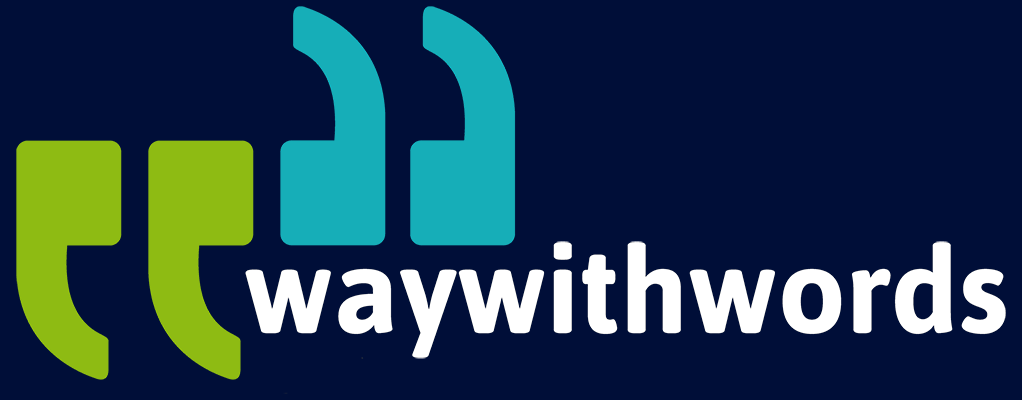Why Is Timestamp Alignment Important in Speech Data?
Connecting the Dots Between Spoken Words and Audio Waveforms
In our increasingly digitised world, speech has become more than just a tool for human interaction. It is now a vital component of how we engage with machines, from voice-controlled assistants to real-time translation apps. Behind the scenes of this technological evolution lies a crucial, often unnoticed process: timestamp alignment with balanced speech datasets.
Timestamp alignment is the backbone of accurate and intelligent speech processing. It connects the dots between spoken words and their positions in an audio waveform. Without this connection, speech data is a formless stream of sound—difficult to analyse, interpret, or build upon.
Whether you’re developing automatic speech recognition systems, producing subtitles, indexing large audio archives, or training voice-driven models, timestamp alignment plays a central role. This article explores its definition, technical value, common tools, challenges, and broader applications. Our goal is to illustrate not just what timestamp alignment is, but why it is indispensable across a wide range of speech-related fields.
Understanding Timestamp Alignment in Speech Processing
To understand the significance of timestamp alignment, we must first define what it entails. Timestamp alignment refers to the process of attaching temporal markers—specific points in time within an audio or video file—to corresponding elements of a transcript. These elements can be individual words, sentences, or even phonemes (the smallest units of sound in language). The process is often automated through a method known as forced alignment, where software matches the transcript to the audio using statistical models.
Let’s consider a simple example. Suppose someone says the phrase, “Good afternoon, everyone.” A timestamp-aligned transcript might show that the word “Good” begins at 00:00:01.2 and ends at 00:00:01.7. “Afternoon” might then begin at 00:00:01.8 and so on. This mapping is what enables precise speech analysis, indexing, playback synchronisation, and model training.
There are two main levels of timestamp alignment:
- Word-level alignment, which provides start and end times for each word. This is widely used in subtitling and general transcription workflows.
- Phoneme-level alignment, which drills down to the duration of individual sounds. This granularity is vital in phonetic research, speech synthesis, and detailed audio quality assessments.
By aligning transcripts with audio, developers and analysts can create structured datasets. These are not only easier to interpret but also make it possible to automate various forms of interaction with spoken content.
This process is foundational to everything from real-time captioning for accessibility to voice-enabled devices capable of understanding natural language.
The Role of Timestamp Alignment in Model Training and Evaluation
When training speech-based machine learning models, high-quality input is critical. Timestamp alignment enhances the usefulness of training data in multiple ways. For automatic speech recognition (ASR) and text-to-speech (TTS) systems in particular, alignment introduces a level of temporal precision that is essential for reliable model behaviour.
In ASR training, alignment ensures that the audio segments fed into the model correspond exactly to the expected transcription outputs. This facilitates more accurate learning and allows the model to distinguish between phonetic variations and background noise. Misalignments, even by fractions of a second, can result in confused models and increased word error rates.
For TTS systems, phoneme-level timestamp alignment is equally important. TTS models require data on how long each sound is typically spoken to generate speech that sounds human-like. Without accurate phoneme timing, synthetic voices can sound rushed, robotic, or unnatural.
Beyond model training, timestamp alignment also supports more detailed evaluation and diagnostics. When an ASR system produces errors, analysts need to understand where and why those errors occur. Aligned data allows them to isolate specific timeframes and identify whether misrecognitions result from poor audio quality, speech speed, or model weaknesses.
Moreover, timestamped training data enables:
- Forced alignment for bootstrapping: Even if a dataset does not initially include timestamps, forced alignment tools can be used to generate them as a pre-processing step.
- Fine-tuning models for speaker-specific traits: Alignment helps capture how different speakers pronounce the same words, allowing for more personalised or inclusive model development.
- Cross-modal synchronisation: In applications where voice must be matched to visuals—such as in avatars or dubbing—timestamp alignment ensures that the output speech is synchronised with lip movements or on-screen events.
In sum, timestamp alignment contributes to cleaner, more effective training data and facilitates better understanding of model performance. It bridges the gap between human speech and machine interpretation in a way that general textual analysis alone cannot achieve.
Common Tools and Techniques for Timestamp Alignment
Numerous tools are available for generating timestamp alignments, each suited to different levels of complexity, language requirements, and use cases. Some of the most widely adopted tools include Gentle, the Montreal Forced Aligner (MFA), and ELAN.
Gentle is a lightweight, open-source aligner that operates offline and provides word-level timestamp alignment. Built on Kaldi, a popular speech recognition framework, Gentle is known for its ease of use. It outputs not just timestamps but also confidence scores, helping users gauge how reliable each alignment is. Gentle is especially useful for short audio files and projects that require privacy, as it does not depend on cloud-based services.
Montreal Forced Aligner (MFA) is more powerful and supports alignment at both the word and phoneme levels. It also allows users to train or use pre-trained acoustic models in different languages, making it more suitable for multilingual or regional data. Though MFA has a steeper learning curve and requires command-line proficiency, it is one of the most accurate and flexible options for serious linguistic or machine learning projects.
ELAN (EUDICO Linguistic Annotator) serves a different purpose. It is a tool for creating and visualising time-aligned annotations across multiple tiers. ELAN is widely used in language documentation and behavioural research. While it does not perform automatic alignment, it can import aligned data from other tools and allows for detailed human annotation and correction. This makes it ideal for projects that involve multiple languages, speakers, or modes of communication (e.g. gestures and intonation).
Other tools include:
- Aeneas, which is helpful for aligning audiobooks or educational content in multiple languages.
- Prosodylab-Aligner, which is used for phonetic studies and supports batch processing of datasets.
- Cloud-based transcription tools, such as Google Speech-to-Text or Amazon Transcribe, which offer built-in timestamping but may lack customisability and phoneme-level detail.
Most alignment tools output data in formats such as JSON, XML, or Praat TextGrid. Subtitling formats like SRT and VTT are also common, especially in video production environments.
Selecting the right tool often comes down to a trade-off between automation and accuracy. While automatic aligners can handle large datasets quickly, manual validation or correction is often necessary to ensure quality—particularly for content intended for public release or model training.

Addressing the Accuracy Challenges of Timestamp Alignment
Despite the availability of advanced tools, timestamp alignment remains a technically challenging task, particularly when dealing with real-world speech.
One of the most common issues is overlapping speech, where two or more speakers talk at the same time. This is frequent in interviews, debates, and casual conversations. Most alignment tools are designed with the assumption that speech occurs in turns. Overlaps can lead to timestamps being assigned incorrectly or entire words being missed. Techniques like speaker diarisation (separating and labelling individual speakers) and multichannel recording can help address this, but they add complexity to the processing pipeline.
Another challenge involves fillers and disfluencies. Human speech is full of hesitations (“um,” “uh”), repetitions, and mid-sentence corrections. These may not be represented in written transcripts, especially when the transcript is edited for readability. This mismatch can confuse aligners, resulting in skewed timestamps. Including verbatim disfluencies or using disfluency-aware models can significantly improve alignment performance.
Speaking rate variability also presents alignment difficulties. A speaker may rush through one sentence and slow down during another. The same phrase may take different lengths of time depending on the context or speaker. Sophisticated alignment tools handle this using dynamic time warping or neural models trained on varying speech patterns.
Poor audio quality is another common obstacle. Background noise, echo, low-quality microphones, and compression artefacts can obscure speech features and lead to inaccurate alignments. Pre-processing techniques such as noise reduction, filtering, and volume normalisation are often necessary before running alignment tools.
Accents and dialectal variation can also trip up alignment algorithms. A model trained on American English may perform poorly on South African English or Nigerian-accented English. Using locally trained acoustic models or dialect-specific lexicons can improve alignment significantly in these cases.
Finally, audio file formatting issues—such as incorrect sampling rates or non-standard encoding—can interfere with alignment tools. Ensuring consistency in audio preprocessing is a key step that is often overlooked.
Addressing these challenges requires not only selecting the right tool but also understanding the data’s specific characteristics. Clean recordings, detailed and accurate transcripts, and awareness of linguistic variation all contribute to better alignment outcomes.
Applications of Timestamp Alignment Beyond Speech Recognition
Although timestamp alignment is a foundational element in speech recognition systems, its value extends far beyond ASR applications. Its influence can be seen across multiple industries and use cases.
One of the most visible applications is in subtitling and closed captioning. Accurate word- or sentence-level timestamp alignment ensures that subtitles appear in perfect sync with the speaker’s voice. This is essential for films, television, online videos, and educational content. Poor alignment results in subtitles that lag or lead, distracting the viewer and potentially causing confusion.
In multilingual subtitling, alignment enables the reuse of timestamps for different language versions, streamlining the translation and localisation process. This is particularly valuable for global content distribution, where consistency in subtitle timing is crucial.
Media indexing is another area that benefits greatly from timestamp alignment. In large content archives—such as those used by broadcasters, courts, or research institutions—timestamped speech data allows users to search and retrieve specific spoken segments quickly. Instead of listening through hours of content, users can jump to precise moments when certain keywords or phrases occur.
In the field of speech analytics, timestamp alignment facilitates the extraction of conversational metrics. For instance, call centre analysts can examine who spoke more, when interruptions occurred, or how long agents took to respond. These insights inform customer service improvements, compliance checks, and behavioural assessments.
Timestamp alignment also plays a key role in language documentation and revitalisation. Linguists studying endangered or under-documented languages often work with spoken field recordings. Aligning these with transcriptions and translations allows for detailed analysis of phonetic and syntactic structures, aiding in preservation efforts and education.
Lastly, timestamp alignment supports interactive learning platforms. Language learners benefit from real-time alignment that allows them to hear, see, and repeat words in sync. Karaoke-style apps, pronunciation guides, and language tutorials all depend on this alignment to create engaging and effective learning experiences.
As speech technologies continue to evolve, the importance of timestamp alignment will only grow. From making media accessible to powering human-computer dialogue, it remains a silent engine driving some of today’s most impactful innovations.
Final Thoughts on Timestamp Alignment in Speech
Timestamp alignment is more than a technical afterthought—it is a cornerstone of how speech is processed, understood, and applied in modern systems. By providing precise links between what is said and when it is said, alignment supports everything from machine learning to accessibility, searchability, and content creation.
It enables accurate training of voice models, improves user experience through well-synchronised subtitles, and opens the door to rich analytics on how people communicate. Despite the challenges of aligning real-world speech, the benefits of doing so are immense.
For anyone working with speech data—whether as a linguist, developer, subtitler, or researcher—mastering timestamp alignment is not just beneficial, it is essential.
Resources and Links
Wikipedia: Forced Alignment – An informative reference on how transcript text is matched to speech audio for analysis and model training.
Way With Words: Speech Collection – Way With Words offers multilingual speech data solutions with precise timestamp alignment for transcription, training datasets, and advanced linguistic analysis.
